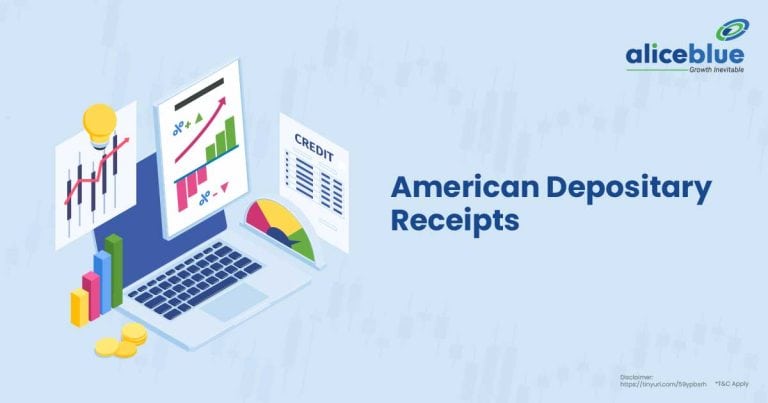The below table shows a list of the Top Performing Flexi Funds in 5 Years based on AUM, NAV, and minimum SIP.
| Name | AUM (Cr) | NAV (Rs) | Minimum SIP (Rs) |
| Parag Parikh Flexi Cap Fund | 78,490.29 | 85.14 | 1,000 |
| HDFC Flexi Cap Fund | 63,436.49 | 2,051.47 | 100 |
| Franklin India Flexi Cap Fund | 17,842.80 | 1,814.90 | 500 |
| Canara Rob Flexi Cap Fund | 13,510.37 | 373.55 | 1,000 |
| DSP Flexi Cap Fund | 11,879.33 | 115.76 | 100 |
| Quant Flexi Cap Fund | 7,435.74 | 119 | 1000 |
| PGIM India Flexi Cap Fund | 6,417.66 | 41.8 | 1,000 |
| HDFC Retirement Savings Fund-Equity Plan | 6,016.24 | 57.39 | 100 |
| HSBC Flexi Cap Fund | 5,077.97 | 243.64 | 500 |
| JM Flexicap Fund | 4,228.30 | 120.3 | 100 |
Introduction to Top Performing Flexi Funds in 5 Years
Parag Parikh Flexi Cap Fund
Parag Parikh Flexi Cap Fund Direct-Growth is a Flexi Cap mutual fund scheme from PPFAS Mutual Fund. This fund has been in existence for 11 years and 4 months having been launched on 13/05/2013.
Parag Parikh Flexi Cap Fund as a flexi cap fund, manages assets valued at ₹78490.29 crore. Over the past 5 years, it has achieved a Compound Annual Growth Rate (CAGR) of 27.04%. This fund has an exit load of 2% and an expense ratio of 0.63 ki%. According to SEBI, it falls under the Very High-risk category. The fund’s asset allocation comprises: Equity – 82.41%, Debt – 17.21%, and Other – 0.38%.
HDFC Flexi Cap Fund
HDFC Flexi Cap Direct Plan-Growth is a Flexi Cap mutual fund scheme from HDFC Mutual Fund. This fund has been in existence for 11 years and 8 months having been launched on 01/01/2013.
HDFC Flexi Cap Direct Plan-Growth as a flexi cap fund, manages assets valued at ₹63436.49 crore. Over the past 5 years, it has achieved a Compound Annual Growth Rate (CAGR) of 25.38%. This fund has an exit load of 1% and an expense ratio of 0.77%. According to SEBI, it falls under the Very High-risk category. The fund’s asset allocation comprises: Equity – 86.49%, Debt – 0.64%, and Other – 12.86%.
Franklin India Flexi Cap Fund
Franklin India Flexi Cap Fund Direct-Growth is a Flexi Cap mutual fund scheme from Franklin Templeton Mutual Fund. This fund has been in existence for 11 years and 8 months having been launched on 01/01/2013.
Franklin India Flexi Cap Fund Direct-Growth as a flexi cap fund, manages assets valued at ₹17842.80 crore. Over the past 5 years, it has achieved a Compound Annual Growth Rate (CAGR) of 25.58%. This fund has an exit load of 1% and an expense ratio of 0.94%. According to SEBI, it falls under the Very High-risk category. The fund’s asset allocation comprises: Equity – 96.11%, Debt – 0.14%, and Other – 3.75%.
Canara Rob Flexi Cap Fund
Canara Robeco Flexi Cap Fund Direct-Growth is a Flexi Cap mutual fund scheme from Canara Robeco Mutual Fund. This fund has been in existence for 11 years and 8 months having been launched on 01/01/2013.
Canara Robeco Flexi Cap Fund Direct-Growth as a flexi cap fund, manages assets valued at ₹13510.37 crore. Over the past 5 years, it has achieved a Compound Annual Growth Rate (CAGR) of 23.01%. This fund has an exit load of 1% and an expense ratio of 0.53%. According to SEBI, it falls under the Very High-risk category. The fund’s asset allocation comprises: Equity – 97.32%, No Debt, and Other – 2.68%.
DSP Flexi Cap Fund
DSP Flexi Cap Fund Direct Plan-Growth is a Flexi Cap mutual fund scheme from DSP Mutual Fund. This fund has been in existence for 11 years and 8 months having been launched on 01/01/2013.
DSP Flexi Cap Fund Direct Plan-Growth as a flexi cap fund, manages assets valued at ₹11879.33 crore. Over the past 5 years, it has achieved a Compound Annual Growth Rate (CAGR) of 23.67%. This fund has an exit load of 1% and an expense ratio of 0.67%. According to SEBI, it falls under the Very High-risk category. The fund’s asset allocation comprises: Equity – 96.86%, No Debt, and Other – 3.14%.
Quant Flexi Cap Fund
Quant Flexi Cap Fund Direct-Growth is a Flexi Cap mutual fund scheme from Quant Mutual Fund. This fund has been in existence for 11 years and 8 months having been launched on 01/01/2013.
Quant Flexi Cap Fund Direct-Growth as a flexi cap fund, manages assets valued at ₹7435.74 crore. Over the past 5 years, it has achieved a Compound Annual Growth Rate (CAGR) of 37.5%. This fund has an exit load of 1% and an expense ratio of 0.59%. According to SEBI, it falls under the Very High-risk category. The fund’s asset allocation comprises: Equity – 87.27%, Debt – 3.35%, and Other – 9.38%.
PGIM India Flexi Cap Fund
PGIM India Flexi Cap Fund Direct-Growth is a Flexi Cap mutual fund scheme from PGIM India Mutual Fund. This fund has been in existence for 9 years and 7 months having been launched on 11/02/2015.
PGIM India Flexi Cap Fund Direct-Growth as a flexi cap fund, manages assets valued at ₹6417.66 crore. Over the past 5 years, it has achieved a Compound Annual Growth Rate (CAGR) of 25.74%. This fund has an exit load of 0.5% and an expense ratio of 0.43%. According to SEBI, it falls under the Very High-risk category. The fund’s asset allocation comprises: Equity – 98.4%, Debt – 1.84%, and Other – (-)0.24%.
HDFC Retirement Savings Fund-Equity Plan
HDFC Retirement Savings Fund Equity Plan Direct-Growth is a Retirement Solutions mutual fund scheme from HDFC Mutual Fund. This fund has been in existence for 8 years and 7 months having been launched on 05/02/2016.
HDFC Retirement Savings Fund Equity Plan Direct-Growth as a flexi cap fund, manages assets valued at ₹6016.24 crore. Over the past 5 years, it has achieved a Compound Annual Growth Rate (CAGR) of 27.61%. This fund has no exit load and an expense ratio of 0.67%. According to SEBI, it falls under the Very High-risk category. The fund’s asset allocation comprises: Equity – 91.91%, No Debt, and Other – 8.08%.
HSBC Flexi Cap Fund
HSBC Flexi Cap Fund Direct-Growth is a Flexi Cap mutual fund scheme from HSBC Mutual Fund. This fund has been in existence for 11 years and 8 months having been launched on 01/01/2013.
HSBC Flexi Cap Fund Direct-Growth as a flexi cap fund, manages assets valued at ₹5077.97 crore. Over the past 5 years, it has achieved a Compound Annual Growth Rate (CAGR) of 24.27%. This fund has an exit load of 1% and an expense ratio of 1.16%. According to SEBI, it falls under the Very High-risk category. The fund’s asset allocation comprises: Equity – 99.37%, No Debt, and Other – 0.63%.
JM Flexicap Fund
JM Flexi Cap Fund Direct Plan-Growth is a Flexi Cap mutual fund scheme from JM Financial Mutual Fund. This fund has been in existence for 11 years and 8 months having been launched on 01/01/2013.
JM Flexi Cap Fund Direct Plan-Growth as a flexi cap fund, manages assets valued at ₹4228.30 crore. Over the past 5 years, it has achieved a Compound Annual Growth Rate (CAGR) of 29.04%. This fund has an exit load of 1% and an expense ratio of 0.41%. According to SEBI, it falls under the Very High-risk category. The fund’s asset allocation comprises: Equity – 98.49%, No Debt, and Other – 1.51%.

What Are Flexi Funds?
Flexi funds are a type of mutual fund that provides flexibility in asset allocation across various market segments, such as equities, debt, and cash. Fund managers adjust the portfolio based on market conditions, aiming for optimal returns.
Unlike traditional funds that stick to specific asset categories, flexi funds allow fund managers to shift between different asset classes. This dynamic approach helps in capitalizing on market opportunities and minimizing risks during volatile conditions, offering more balanced returns.
Flexi funds are suitable for investors looking for long-term growth with moderate risk. By adapting to market fluctuations, they can offer diversification and potentially higher returns compared to rigidly structured funds.
Features Of Top Performing Flexi Funds in 5 Years
The main features of top-performing flexi funds over the past 5 years include dynamic asset allocation, strong risk management, consistent returns, and expert fund management. These funds have demonstrated resilience in volatile markets and offer balanced returns by leveraging various asset classes.
- Dynamic Asset Allocation: Top-performing flexi funds adjust their allocation between equity, debt, and other asset classes based on market conditions, ensuring that the portfolio remains optimized for growth and stability, allowing investors to benefit from different market cycles effectively.
- Strong Risk Management: These funds emphasize risk management by diversifying across sectors and asset classes. They help reduce exposure to any single segment, thus protecting the portfolio from market downturns, and offering investors a safer investment option.
- Consistent Returns: Despite market volatility, top flexi funds have provided consistent returns over the last 5 years. Their ability to shift strategies depending on market trends allows them to maintain a steady performance, making them attractive to long-term investors.
- Expert Fund Management: These funds are managed by experienced professionals who monitor market movements closely and make informed decisions. Their expertise ensures that the portfolio is well-positioned to capitalize on growth opportunities while minimizing risks.
Best Performing Flexi Funds in 5 Years
The table below shows the Best Performing Flexi Funds in 5 Years Based on the highest to lowest expense ratio.
| Name | Expense Ratio (%) | Minimum SIP (Rs) |
| HSBC Flexi Cap Fund | 1.16 | 500 |
| Franklin India Flexi Cap Fund | 0.94 | 500 |
| Union Flexi Cap Fund | 0.83 | 500 |
| HDFC Flexi Cap Fund | 0.77 | 100 |
| ICICI Pru Retirement Fund | 0.77 | 100 |
| DSP Flexi Cap Fund | 0.67 | 100 |
| HDFC Retirement Savings Fund-Equity Plan | 0.67 | 100 |
| Parag Parikh Flexi Cap Fund | 0.63 | 1,000 |
| Quant Flexi Cap Fund | 0.59 | 1000 |
| Canara Rob Flexi Cap Fund | 0.53 | 1,000 |
Top Performing Flexi Funds in 5 Years In India
The table below shows the Top Performing Flexi Funds in 5 Years In India Based on the Highest 3Y CAGR.
| Name | CAGR 3Y (Cr) | Minimum SIP (Rs) |
| JM Flexicap Fund | 29.45 | 100 |
| ICICI Pru Retirement Fund | 27.92 | 100 |
| HDFC Flexi Cap Fund | 27.03 | 100 |
| Quant Flexi Cap Fund | 25.54 | 1000 |
| HDFC Retirement Savings Fund-Equity Plan | 23.12 | 100 |
| Franklin India Flexi Cap Fund | 22.15 | 500 |
| Edelweiss Flexi Cap Fund | 21.48 | 100 |
| HSBC Flexi Cap Fund | 20.24 | 500 |
| Kotak Multi Asset Allocator FoF-Dynamic | 19.35 | 100 |
| Parag Parikh Flexi Cap Fund | 18.49 | 1,000 |
Top Performing Flexi Funds in 5 Years List
The table below shows the Top Performing Flexi Funds in the 5 Years List based on exit load, i.e., the fee that the AMC charges investors when they exit or redeem their fund units.
| Name | AMC | Exit Load (%) |
| Parag Parikh Flexi Cap Fund | PPFAS Asset Management Pvt. Ltd. | 2 |
| JM Flexicap Fund | JM Financial Asset Management Private Limited | 1 |
| HDFC Flexi Cap Fund | HDFC Asset Management Company Limited | 1 |
| Quant Flexi Cap Fund | Quant Money Managers Limited | 1 |
| Franklin India Flexi Cap Fund | Franklin Templeton Asset Management (India) Private Limited | 1 |
| Edelweiss Flexi Cap Fund | Edelweiss Asset Management Limited | 1 |
| HSBC Flexi Cap Fund | HSBC Global Asset Management (India) Private Limited | 1 |
| Kotak Multi Asset Allocator FoF-Dynamic | Kotak Mahindra Asset Management Company Limited | 1 |
| DSP Flexi Cap Fund | DSP Investment Managers Private Limited | 1 |
| Union Flexi Cap Fund | Union Asset Management Company Pvt. Ltd. | 1 |
Factors To Consider When Investing In Top Performing Flexi Funds in 5 Years
The main factors to consider when investing in top-performing flexi funds over the past 5 years include fund performance consistency, risk tolerance, expense ratio, and the expertise of fund managers. Evaluating these aspects helps ensure a balanced and profitable investment decision.
- Fund Performance Consistency: Analyze the fund’s performance over different market cycles. Consistent returns over a 5-year period indicate a well-managed fund that can withstand volatility and deliver stable returns, offering a reliable option for long-term investors.
- Risk Tolerance: Flexi funds carry varying levels of risk based on their asset allocation. Investors should assess their own risk tolerance and match it with the fund’s strategy, ensuring that it aligns with their financial goals and ability to handle market fluctuations.
- Expense Ratio: Check the expense ratio, which is the annual fee charged by the fund. Lower expense ratios can positively impact overall returns, especially in the long run. Comparing costs among top-performing flexi funds can help maximize gains over time.
- Expertise of Fund Managers: The experience and track record of fund managers play a crucial role in the success of flexi funds. Research the managers’ decision-making abilities and their expertise in navigating complex market conditions to ensure skilled management of the investment.
How To Invest In Top Performing Flexi Funds in 5 Years?
To invest in top-performing flexi funds over the past 5 years, start by researching different funds and analyzing their performance, risk levels, and expense ratios. Ensure the fund aligns with your investment goals, risk tolerance, and desired returns for long-term growth.
Next, open an account with a reliable brokerage platform like Alice Blue, which offers easy access to various mutual funds, including top-performing flexi funds. Alice Blue provides a user-friendly interface, low brokerage fees, and the ability to track and manage investments efficiently.
Once your account is set up, select the desired flexi fund, decide the investment amount, and either opt for a lump sum investment or a systematic investment plan (SIP). Review the fund’s performance periodically to make informed adjustments if necessary.
Advantages Of Investing In Top Performing Flexi Funds in 5 Years?
The main advantages of investing in top-performing flexi funds over the past 5 years include dynamic portfolio management, diversified risk, flexibility in asset allocation, and potential for higher returns. These features make flexi funds suitable for investors seeking long-term growth and risk management.
- Dynamic Portfolio Management: Flexi funds allow fund managers to dynamically adjust investments across equities, debt, and other assets based on market conditions. This proactive approach helps optimize returns and reduce risks, providing more stability to the portfolio in volatile markets.
- Diversified Risk: By investing in multiple asset classes and sectors, flexi funds reduce exposure to any single market segment. This diversification helps mitigate risks and enhances the overall stability of the investment, making it a safer choice for investors.
- Flexibility in Asset Allocation: Unlike traditional funds, flexi funds offer flexibility in asset allocation, allowing fund managers to shift between different asset classes. This flexibility helps capture growth opportunities in different markets and sectors, maximizing potential returns for investors.
- Potential for Higher Returns: With expert fund managers actively managing the portfolio, flexi funds have the potential to deliver higher returns. Their ability to capitalize on favorable market trends and adjust strategies ensures competitive performance, making them attractive for long-term wealth accumulation.
Risks Of Investing In Top Performing Flexi Funds in 5 Years?
The main risks of investing in top-performing flexi funds over the past 5 years include market volatility, manager risk, liquidity concerns, and interest rate fluctuations. These factors can affect returns and stability, making it crucial to understand and manage these risks effectively.
- Market Volatility: Flexi funds are exposed to market fluctuations due to their dynamic asset allocation. Sudden market changes can impact fund performance, making it essential to monitor market conditions and be prepared for potential short-term losses.
- Manager Risk: The performance of flexi funds heavily depends on the expertise of fund managers. Poor decision-making or changes in fund management can negatively affect returns, emphasizing the need to evaluate the track record and stability of the fund managers.
- Liquidity Concerns: Flexi funds may face liquidity issues, especially in volatile markets. If a significant portion of the portfolio is invested in less liquid assets, it could be challenging to sell holdings quickly without impacting the fund’s value.
- Interest Rate Fluctuations: Changes in interest rates can impact the performance of flexi funds, particularly those with significant debt investments. Rising interest rates can reduce bond prices, affecting overall fund returns and necessitating awareness of interest rate trends.
Importance of Flexi Funds
Flexi funds are important because they offer flexibility in asset allocation, allowing fund managers to adjust investments based on market conditions. This dynamic strategy helps optimize returns and manage risks, providing stability during volatile market phases.
Additionally, flexi funds provide diversification across multiple asset classes, reducing exposure to any single market or sector. This makes them a valuable option for long-term investors seeking balanced growth, especially in unpredictable market environments while benefiting from expert fund management.
How Long to Stay Invested in Flexi Funds?
Investors should stay invested in flexi funds for at least 5 to 7 years to benefit from market cycles and long-term growth. This period allows fund managers to adjust the portfolio based on market conditions, optimizing returns and reducing risks.
Staying invested for a longer period also helps mitigate short-term market volatility, ensuring more stable returns. Flexi funds are best suited for long-term financial goals, such as retirement or wealth creation, where sustained growth and capital appreciation are prioritized.
Tax Implications of Investing in Flexi Funds
Tax implications for flexi funds vary based on the holding period. If sold within a year, short-term capital gains (STCG) are taxed at a higher rate. For investments held longer than a year, long-term capital gains (LTCG) are taxed at a lower rate.
Additionally, long-term gains up to a certain threshold are exempt from tax. Dividends from flexi funds are taxable based on the investor’s income tax rate, and the fund house deducts tax at the source if dividends exceed a specified annual limit.
Future of Flexi Funds
The future of flexi funds looks promising due to their adaptability and potential for higher returns. As market dynamics become more complex, the flexibility in asset allocation will be increasingly valued by investors seeking growth and risk management.
With growing interest in customized investment solutions, flexi funds are expected to gain popularity. Their ability to adjust to changing market conditions and provide diversified exposure aligns well with evolving investor needs for balanced and strategic financial planning..

Top Performing Flexi Funds in 5 Years FAQs
Flexi funds are mutual funds with dynamic asset allocation across equities, debt, and other investments. They adjust their portfolio based on market conditions to optimize returns and manage risks, offering flexibility and potential for balanced growth.
Top Performing Flexi Funds in 5 Years #1: Parag Parikh Flexi Cap Fund
Top Performing Flexi Funds in 5 Years #2: HDFC Flexi Cap Fund
Top Performing Flexi Funds in 5 Years #3: Franklin India Flexi Cap Fund
Top Performing Flexi Funds in 5 Years #4: Canara Rob Flexi Cap Fund
Top Performing Flexi Funds in 5 Years #5: DSP Flexi Cap Fund
These funds are listed based on the Highest AUM.
The Best Performing Flexi Funds based on expense ratio include HSBC Flexi Cap Fund, Franklin India Flexi Cap Fund, Union Flexi Cap Fund, HDFC Flexi Cap Fund, and ICICI Pru Retirement Fund.
To invest in top-performing flexi funds, research fund performance, check fund ratings, and compare expense ratios. Open an account with Alice Blue, then select the fund that aligns with your risk tolerance and investment goals.
Investing in top-performing flexi funds over the past 5 years can be advantageous due to their flexibility and potential for strong returns. However, it’s important to assess current performance, risk factors, and alignment with your long-term financial goals before investing.
Yes, you can buy top-performing flexi funds from the past 5 years. However, it’s crucial to review the fund’s current performance, fee structure, and alignment with your investment goals to ensure it fits your financial strategy and risk tolerance.
We hope you’re clear on the topic, but there’s more to explore in stocks, commodities, mutual funds, and related areas. Here are important topics to learn about.
Disclaimer: The above article is written for educational purposes, and the companies’ data mentioned in the article may change with respect to time The securities quoted are exemplary and are not recommendatory.








